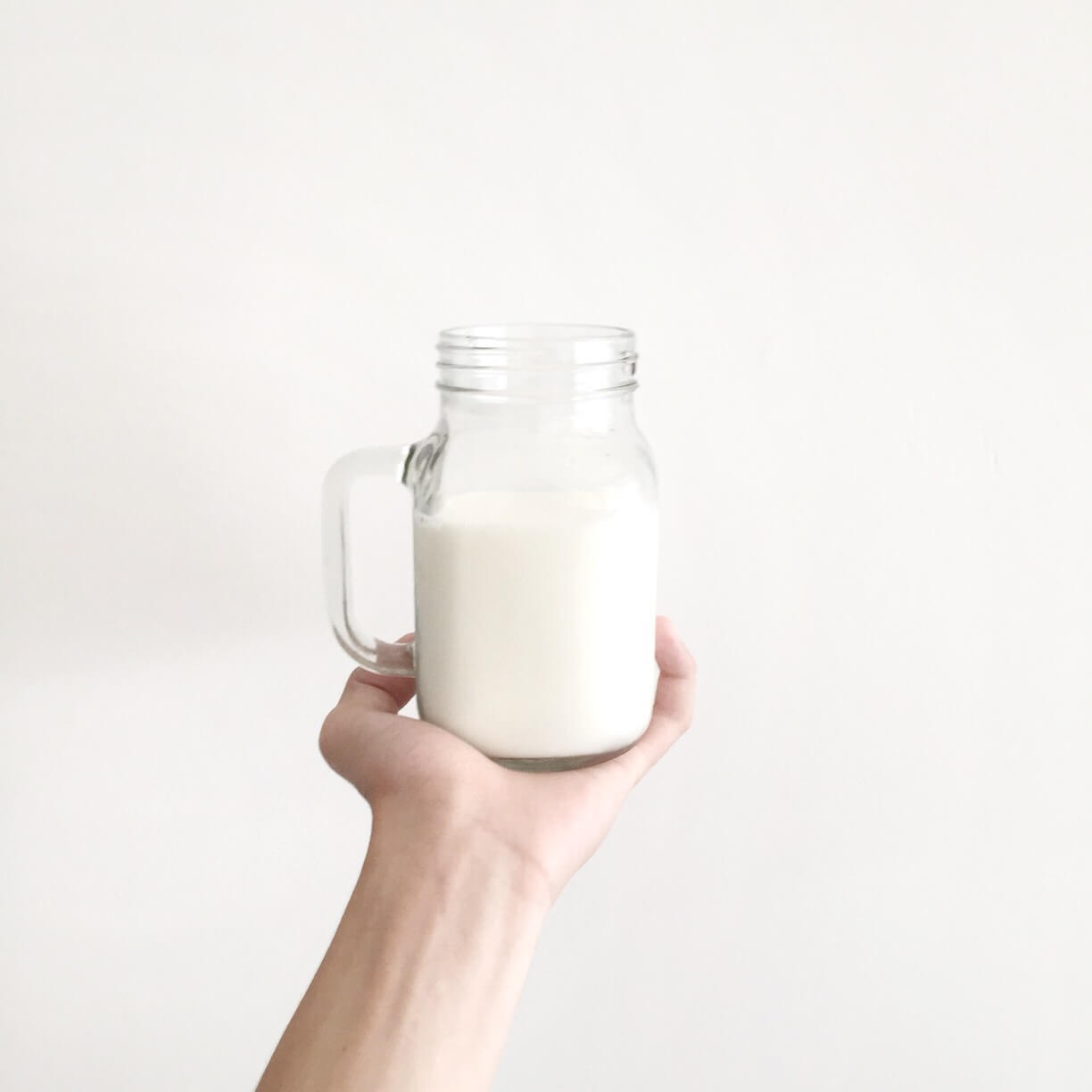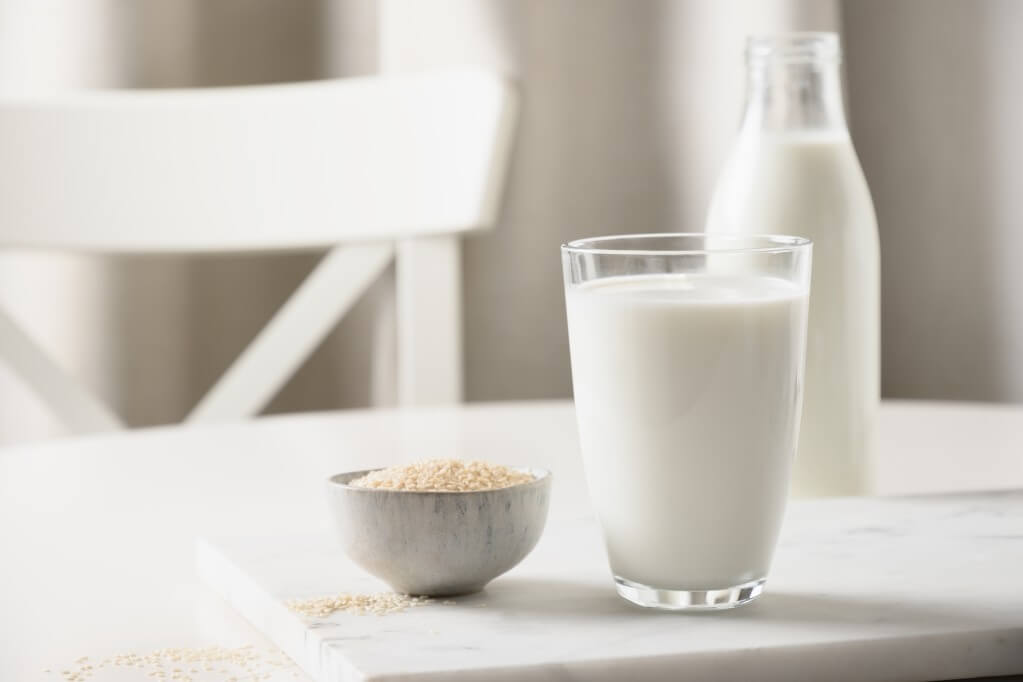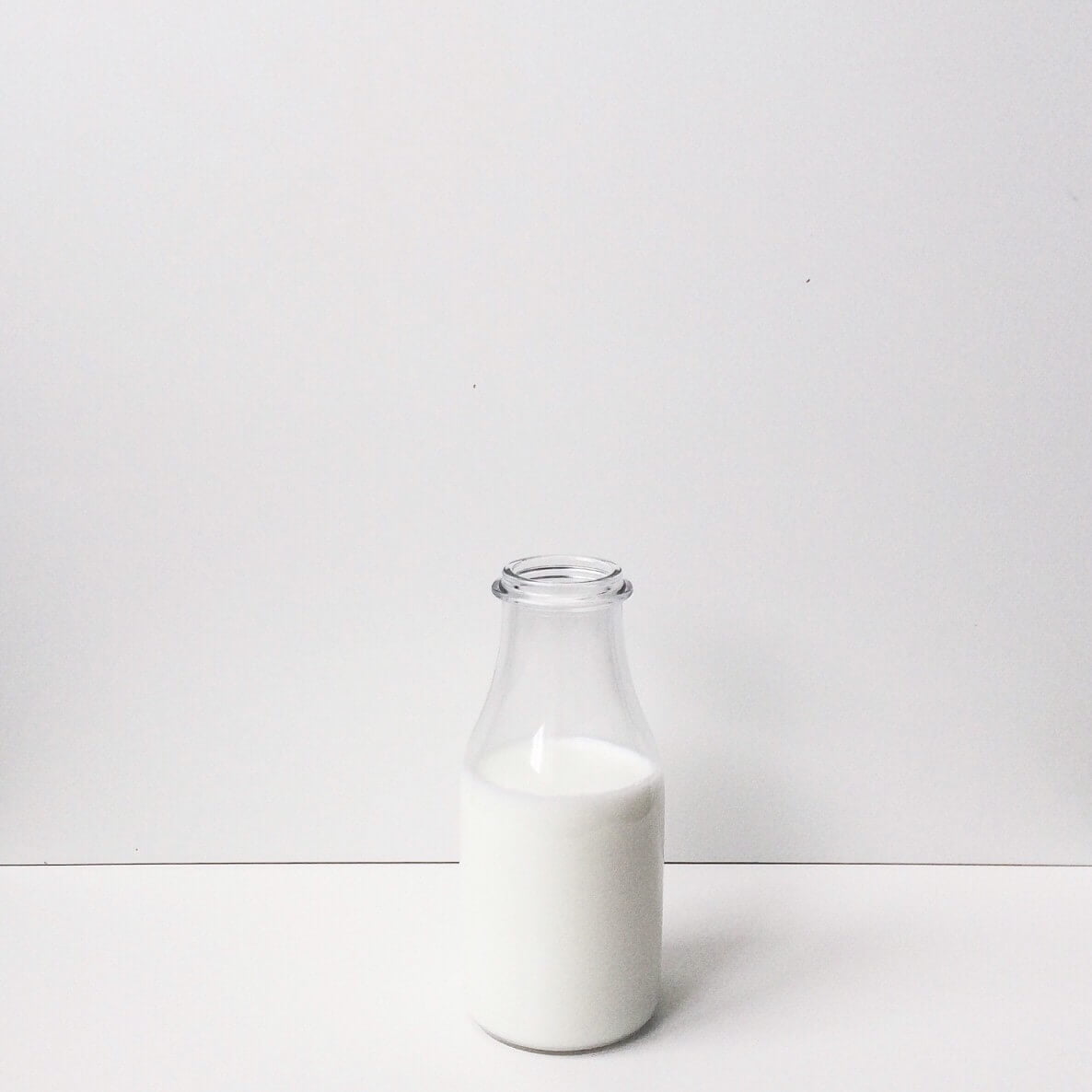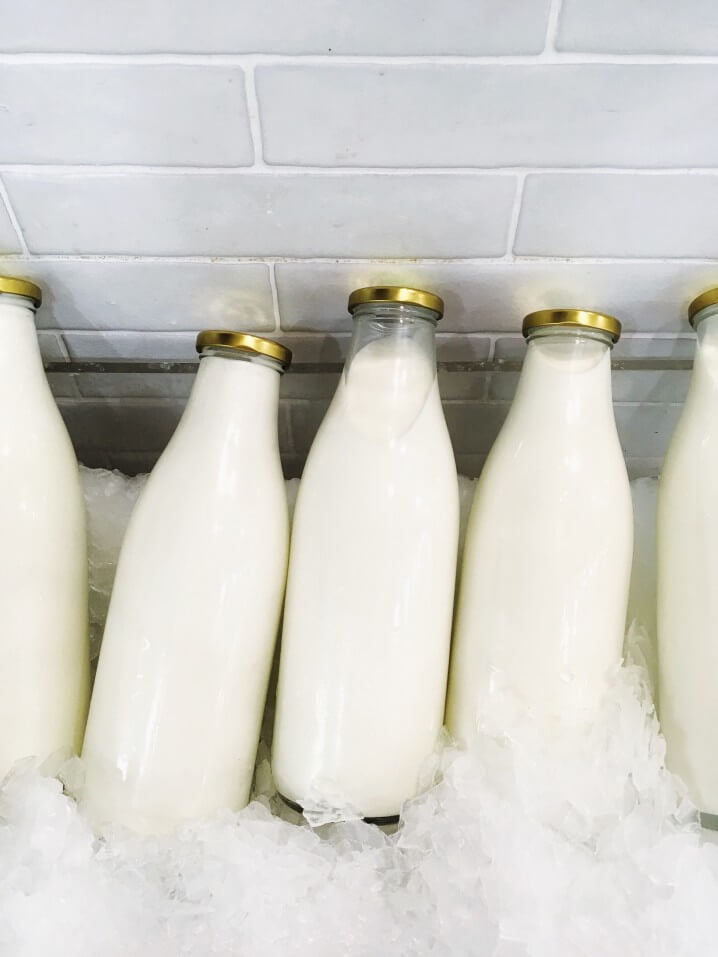Oat Milk vs. Soy Milk
Oat milk and soy milk are two high-protein dairy milk alternatives. While soy milk has been around longer, oat milk is growing in popularity. But which is better?
Oat milk and soy milk are two high-protein dairy milk alternatives. While soy milk has been around longer, oat milk is growing in popularity. But which is better?
Oat milk and soy milk are two popular alternatives to traditional dairy milk. But when we look at oat milk vs. soy milk, how do their respective nutritional profiles, tastes, and pros/cons compare?
Soy milk differs from oat milk in various nutrient content areas, such as protein, calories, fat, and minerals. Further, the tastes of these two non-dairy milks differ, as oat milk tends to be sweeter and milder in flavor.
Keep reading to learn more about how these two dairy alternatives compare.
Whether you’re lactose intolerant or simply want to follow a plant-based diet, there are many reasons to opt for soy milk or oat milk instead of dairy.
Both are relatively healthy and tasty and can replace milk in most recipes.
But to fully understand how these alternatives distinguish themselves, it’s important to compare their characteristics.
That’s why we’re taking a look at the following aspects of each type of milk:

We’re comparing the relative nutritional content in oat and soy milk, based on how much of each nutrient exists in 1 cup of each drink.
Soy milk tends to be the slightly healthier non-dairy milk based on its relative fat, sugar, and carb content.
However, there are more aspects to consider regarding the nutritional value of both of these plant-based drinks.
1 Cup | Oat Milk | Soy Milk |
|---|---|---|
Calories | 120 | 100 |
Protein | 3g | 9g |
Fat | 5g | 4g |
Carbohydrates | 16g | 4g |
Fiber | 2g | 1g |
Soy milk is generally lower in calories than oat milk.
While soy milk has 38 calories in a one-cup serving, oat milk has 100 calories in the same serving size.
This is primarily because oat milk has more fat, carbohydrates, and sugar.
These days, you’ll frequently find oat milk advertised as a coffee add-in at cafes and restaurants.
When given the option between oat and soy milk for coffee, many individuals opt for soy milk to cut down on calories.
Oat milk has about 3g of protein per one-cup serving, and soy milk has roughly 4-8g of protein per serving.
Since soy milk has a high protein content, many people opt for soy to help meet their daily protein macros.
Soy milk is one of the highest protein types of non-dairy milk, making it an ideal plant-based protein source.
Oat milk has about 5g of fat per cup serving, whereas soy milk has roughly 2-4g of fat.
Oat milk is higher in carbohydrates than soy milk.
With roughly 16g of carbs per cup serving, it outnumbers soy milk’s 4g per cup.
Further, it outnumbers soy milk’s sugar content since oat milk has 7g of sugar per cup and soy milk has 1-2g of sugar per cup serving.
However, both dairy alternatives have relatively similar fiber content (2g per cup of oat milk and roughly 1g per cup of soy milk).
Because of the relatively high carb content in oat milk, it’s not a super keto-friendly non-dairy milk.
Both soy milk and oat milk have some calcium in each serving, albeit in relatively different amounts.
Compared to traditional dairy milk (1% fat), which has about 305mg of calcium per cup serving, oat and soy milk come close in their calcium content.
For example, a cup serving of soy milk contains about 202 mg of calcium, whereas a cup serving of oat milk contains about 350mg of calcium.
One specific nutrient in oat milk is Vitamin B12, an essential B vitamin for cell metabolism, red blood cell formation, nerve functioning, and DNA production.
If you have a Vitamin B12 deficiency, as many people on plant-based diets do, oat milk could be a good source of B12 supplement (1.2 µg per cup serving).
On the other hand, soy milk typically only has about 0.78 µg of Vitamin B12 per cup.
Soy milk also contains other vitamins that you won’t find in oat milk products.
Soy milk has:
In terms of potassium, soy and oat milk have relatively similar content per cup serving - 389mg per cup of oat milk and 316mg per cup of soy milk.

Many people find that oat milk is the preferable non-dairy milk if you want something sweet to complement your morning coffee or latte.
But soy milk has a unique flavor, and it’s worth considering how they both taste and complement things like cereal, smoothies, and other foods.
Because oat milk has more sugar, it’s a sweeter, milder drink than soy milk.
Oat milk also tends to have an oaty aftertaste, which you don’t get with soy milk.
Other oat milk notes include nutty flavors and a striking similarity to the taste of cow’s milk.
Related: What Does Oat Milk Taste Like?
Soy milk is not super sweet - that is, unless you buy sweetened or flavored soy milk, like chocolate soy milk, for example.
It is, however, mild and creamy, which makes it a popular option for coffee.
Soy milk is sometimes known for having an aftertaste described as bitter or somewhat sour, which you can minimize with flavorings and sweeteners.
The textures of oat and soy milk also differ slightly.
Oat milk tends to be on the more watery side when compared to soy milk.
Furthermore, it can be pulpy in texture because the oat particles separate and settle in the milk.
Some people believe it’s smoother than cow’s milk, but it won’t usually be as creamy as dairy.
Soy milk is a creamy non-dairy milk often described as smooth or even “silky” in texture.
It’s thicker than oat milk, as it’s richer in many important nutrients like protein and vitamins. It’s closer to cow’s milk’s consistency than oat milk.

When it comes to who can consume oat milk and soy milk, the answers differ slightly. Although these are both plant-based milks, they have different allergens to be aware of, and they suit certain diets differently.
Diet | Soy Milk | Oat Milk |
|---|---|---|
Keto | Yes | No |
Paleo | No | No |
Vegan | Yes | Yes |
For more info, check out these articles:
When it comes to common allergens, we mainly look out for the following on food/beverage labels:
Oat milk is not friendly to those with oat allergies.
Still, oat milk is gluten-free as long as it doesn’t undergo cross-contamination in the production process.
Oat milk is, however, lactose-free, free of tree nuts, free of peanuts, and free of soy.
Soy milk is not soy-free and, therefore, not good for those with soy allergies.
However, it is free of oats, tree nuts, peanuts, and lactose.
To avoid soy milk contaminated with gluten, you need to check the label for the presence of preservatives and additives containing gluten.

Consider the potential benefits of drinking oat milk and adding it to your diet and the downsides associated with the non-dairy milk.
Oat milk has a notably high Vitamin B12 nutrient content, providing 50% of the recommended daily value.
Without enough B12, you can experience disturbances in mood and nerve functioning, so drinking oat milk may be a good supplement of the vitamin.
Oat milk is popular enough to commonly find it at supermarkets, restaurants, and cafes these days, making it accessible.
It’s also an ideal alternative to cow’s milk if you need a vegan/vegetarian product, and it’s free of most common allergens.
One other notable pro of oat milk is its calcium content, which is comparable to that of cow’s milk.
Calcium is essential for bone and cardiovascular health, especially in women, so this is a big selling point for oat milk.
While there are obvious benefits to oat milk, it isn’t safe for those with oat allergies and may not be safe for those with gluten allergies.
Another downside to drinking oat milk is its price tag, which is nearly twice that of a gallon of cow’s milk, on average.
It’s also not keto-friendly or paleo-friendly.
Furthermore, oat milk:

If you ask yourself why someone might want to drink oat milk, then you should ask yourself the same question about soy milk.
Consider the potential advantages of drinking soy milk, as well as the possible downsides compared to oat milk.
One of the most obvious benefits of drinking soy milk, compared to oat milk, is that it’s dense in nutrients.
There are fewer unhealthy nutrients - like sugar, carbs, and fat - and more healthy nutrients.
Most notably, soy milk has Omega-3 fatty acids, which positively impact blood pressure, cell health, nervous system health, and inflammation problems.
Soy milk also contains beneficial nutrients such as:
Furthermore, soy milk is cheaper than oat milk and is one of the most accessible non-dairy milks at grocery stores and cafes.
Soy milk also has some downsides, like the fact that it contains soy - an allergen present in less than 1% of children.
It can also be cross-contaminated with gluten and isn’t compatible with paleo diets or certain keto diets.
Soy milk is also slightly more expensive than traditional cow’s milk.
It has other cons, including:
At the end of the day, there are both benefits and drawbacks to drinking oat milk and soy milk.
Each plant-based milk contains a unique nutrient profile, although soy milk has more densely packed nutrients such as vitamins and protein.
Both drinks have a smooth, creamy texture compared to dairy milk, but oat milk is often sweeter and milder in flavor.
Both kinds of non-dairy milk are more expensive than dairy milk.
Soy and oat milk both contain some allergens, but not many.
Depending on the flavor, texture, and nutrient profile you desire, soy or oat milk may just do the trick for you.
They’re both tasty and healthy dairy alternatives to add to a diet that allows soy and/or oats.